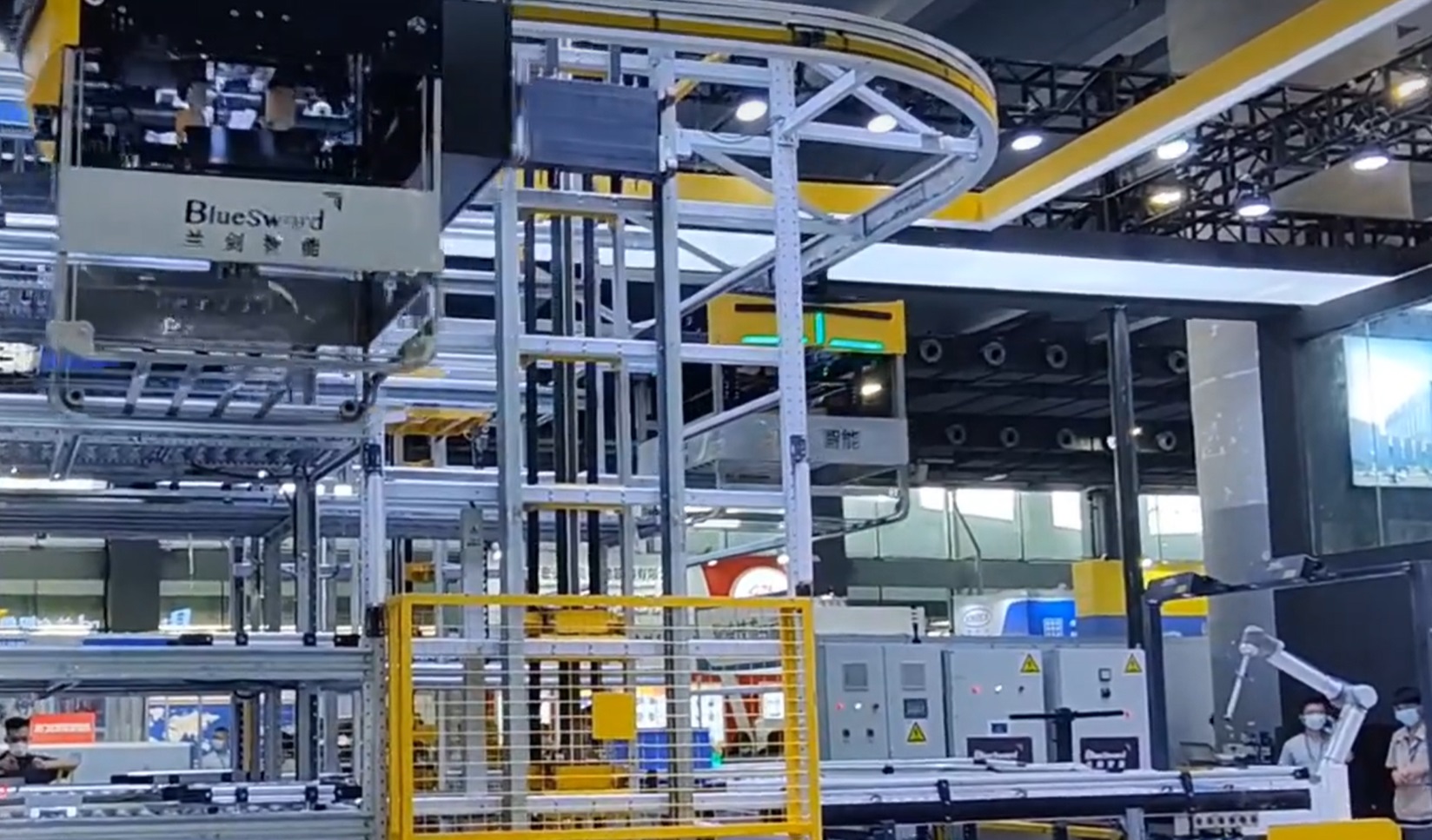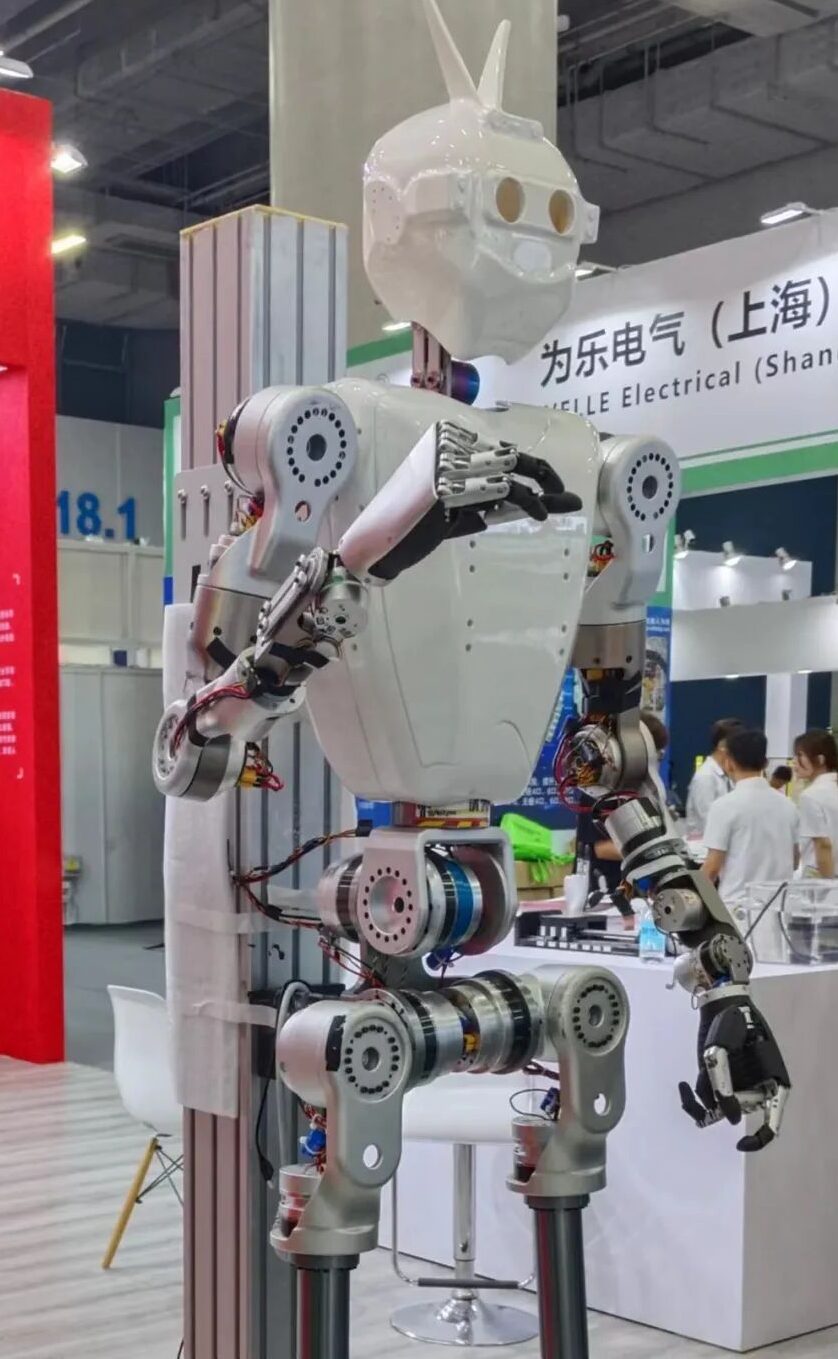
LET 2024 officially opened in Guangzhou on May 29. As the cornerstone of intelligent logistics, various mobile robots have become the “stars” of the exhibition, showcasing their robust vitality and innovative capabilities. The products displayed by numerous companies provide insight into current trends and the status of the mobile robot industry.

Persistent Demand for Unmanned Forklifts in Warehousing Logistics
Unmanned forklifts are among the most popular products at this exhibition. Leading companies such as Hikrobot, Dolphin Star, Gaitech Robotics, Noblelift Intelligent Equipment, Seer Robotics, and Iron Ox presented their flagship products. Observations of these unmanned forklift offerings reveal several major development trends.
Omni-directional drive is a significant trend. Omni-directional unmanned forklifts are highly flexible, capable of multi-directional movement, suitable for narrow spaces and complex work environments, greatly enhancing logistics operations’ flexibility. At this exhibition, Seer Robotics, Hikrobot, JLR Robotics Institute, and Gaitech Robotics showcased their omni-directional drive unmanned forklifts.

With the application of sensor technology, artificial intelligence, and big data, the intelligence level of unmanned forklifts has significantly improved. These advancements enable more precise environmental perception, path planning, and task execution.
3D navigation technology is becoming mainstream. Utilizing 3D vision recognition and positioning technology, unmanned forklifts can more accurately identify and locate objects, improving operational precision and efficiency. For example, Seer Robotics showcased their new forklift, demonstrating 3D navigation with ±5mm repeat positioning accuracy. Companies like LeiShen Intelligent also showcased their 3D unmanned forklift products.
Several unmanned forklift companies have reported continued market demand in the first half of this year, with significant business growth in the unmanned forklift sector. This indicates broad application prospects and growth potential in the current market.
Compound Robots Enhance Warehousing Logistics
The increasing demand for industrial intelligence and the complexity of processes have led to the emergence of compound robots, which are becoming crucial for flexible production. Compound robots can perform various automated operations, significantly enhancing overall logistics efficiency. Many companies showcased their compound robot products at this exhibition.
Simultaneously, some companies are exploring more diverse technological directions to address broader application scenarios. For example, Oukai Robotics showcased their new dual-arm compound robot, which features dual-arm coordinated operation, effectively improving production efficiency for industries such as chemical fiber and glass.
As the application scenarios for compound robots expand, their forms will also diversify. Besides single-arm models, dual-arm or multi-arm compound robots may become increasingly common, flexibly responding to various complex processes. These trends suggest that compound robots will play an increasingly important role in future industrial automation and intelligence, driving further improvements in overall industry efficiency and productivity.
Four-way Shuttles and Mobile Robots in Warehousing Logistics
Four-way shuttles are also a highlight of this exhibition. As an efficient warehousing and logistics solution, four-way shuttles can move flexibly in both horizontal and vertical directions, significantly improving storage space utilization. Companies such as Columbus, Infore Robot Technology, RoboShuttle, LongChain Intelligence, and Megvii showcased their latest products and solutions.
The collaboration between four-way shuttles and mobile robots is a major highlight. When working together, they can achieve rapid cargo transfer within the warehouse, significantly enhancing logistics efficiency and response speed. For example, Megvii demonstrated their pallet four-way shuttle solution, which, combined with mobile robots, showcased efficient operations in real-world applications.
From the overall development trend of four-way shuttles, more companies are providing integrated logistics solutions. By integrating four-way shuttles with other automated equipment and systems, they offer end-to-end logistics management and optimization services. As an efficient warehousing logistics solution, four-way shuttles, with their intelligence, flexibility, and efficiency, will undoubtedly occupy an important position in the future logistics industry. While continuously innovating and optimizing products, companies should also explore broader application scenarios and cooperation models to promote the intelligent transformation of the industry.
Potential of Humanoid Robots in Warehousing Logistics

The emergence of humanoid robots brings new possibilities to the logistics industry. Although the application of humanoid robots in logistics is still in the exploratory stage, their potential cannot be ignored. Some humanoid robots were also seen at this logistics exhibition. Tiger Robotics showcased their humanoid robots and joint modules, while Welltrans Electric presented their innovative power solutions in the fields of humanoid, collaborative, and industrial robots. With technological advancements, humanoid robots may possess greater flexibility and interaction capabilities in the future, potentially performing various tasks in complex environments such as sorting, handling, and packaging.
Discussions with numerous exhibiting companies provided valuable market feedback. Despite the challenges facing the industry, such as homogenized competition, price wars, and profitability difficulties, most companies remain optimistic about the future. This optimism is partly due to the irreversible trend of digital and intelligent transformation in logistics and industry. Additionally, market development is always spiral and wave-like, and despite the current challenging path, future prospects remain bright. We look forward to seeing more innovative technologies and products that will help the logistics industry achieve more efficient and intelligent transformation and upgrading.
2024 Q1 China Mobile Robots Market Trends Part 1 – Automotive Sector
2024 Q1 China Mobile Robots Market Trends Part 2 – New AGV/AMR Releases
2024 Q1 China Mobile Robots Market Trends Part 3 – Emerging Applications
2024 Q1 China Mobile Robots Market Trends Part 4 – Future of Humanoid Robots
©Copyright 2023 Zhejiang MRDVS Technology Co.,Ltd.